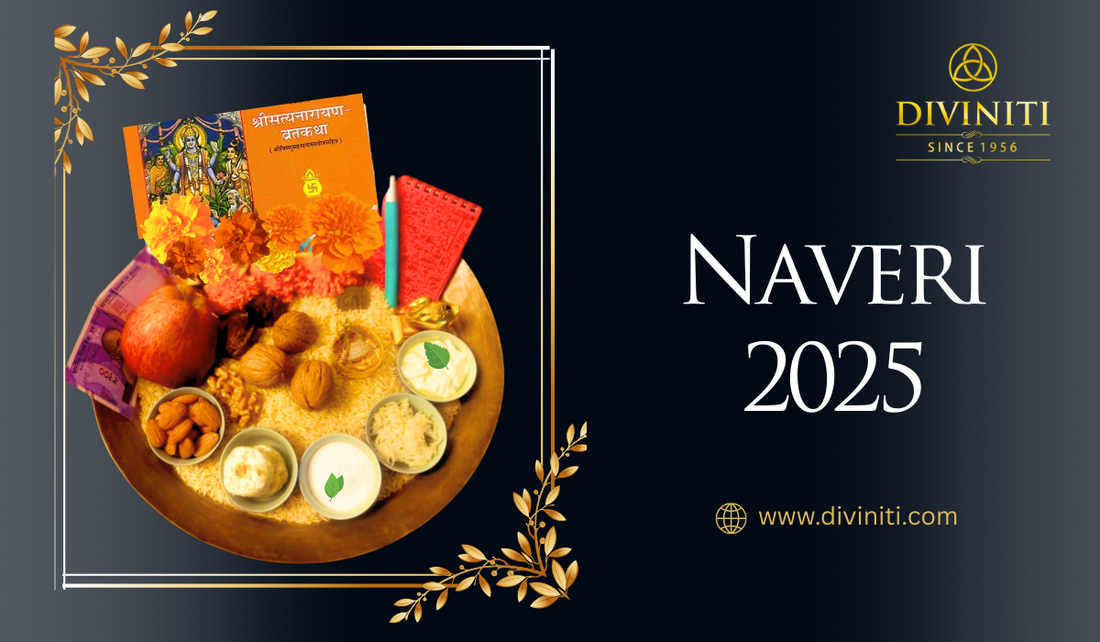
Navreh Festival 2025: Celebrate Kashmiri Hindu New Year
Share
Also Read About:- Chaitra Navratri 2025 || Gudi Padwa || Ugadi Festival || Sri Ram Navami
Navareh Kashmiri is a celebration of the first day of the New Year which comes on the first day of Chaitra Shukla Paksha Pratipada (March/April). The day is celebrated with various names all over India such as Gudi Padwa is the new year for the Maharastrian and Goan community, the new year for the Chand Sindhi community, Ugadi is Telugu and Kannada New Year, and Cheeroba in Manipur. Navre will be celebrated on 30th March in 2025. It matches the first day of Chaitra Navratri. This day is mentioned in Rajtarangini and Nilamat Purana in Kashmir. People here celebrate this second Navratri (first during the 9 days of the Navratri festival, concluding with Dussehra) in remembrance of the victory of his great king, Lalitaditya. Navare comes in the form of Gudi Padwa or Ugadi on the same day.
Navareh Plate Ritual
The Navreh Sanskrit word is derived from 'Nav-Varasha', which means the new year. Kashmiri Hindus follow a unique custom on this occasion. In the evening before the day of Navreh, the housewife decorates a plate (a large silver or steel plate) and fills it with rice. She neatly arranges new almanac (krell Pach), a local herb, known as wye, dried or fresh flowers, sprouted grass, a small glass of water or milk, curd, honey, walnuts, pen, paper, little salt, a small bread, some cooked rice, and a gold or silver coin above rice. These materials symbolize auspiciousness, wealth, prosperity and all good things to be desired in life. They are arranged for aesthetics on small mounds of rice in Thali.
The Thal is prepared at night, then covered with a piece of cloth and placed overnight in the center of the house i.e. the kitchen, choke or chokur right next to the chokur may be the wholesale, prayer room. The next day, before the day of the day, the oldest woman of the house, usually grandmother or mother, goes around the house to awaken family members one by one, asks them to open their eyes and look at the first plate, before starting their daily tasks. Known as Buth vuchun, the ritual of looking at the plate is said to bring good luck, good health, prosperity and knowledge.
Importance of Plate
Each item on the plate has its own importance.
Paddy - While it is a symbol of wealth and expansion, cooked rice stands for progress and physical and mental development in life. The curd stands for perfection, stability and harmony. Sweet bread represents engagement and amalgamation in a socio-cultural environment. Walnuts indicate human and universal minds; Convenor kernel represents four men, goals of existence - religion, discharge of duty; Meaning, acquisition of money; Work, satisfaction of desire, and salvation, liberation.
The coin- It stands for the strength of the material and the gold jewelry symbolizes purity. While medicinal herbs indicate good health, flowers represent optimism, fragrance and sympathy in life. Pen is for knowledge and self-lightness and salt for positive energy. The almanac represents the need to respect time and time in our lives and lead a disciplined life. krell Pach, family goddess stands for faith in her grace. The mirror stands for the multiplication of auspiciousness, due to its specialty of reflection.
Later in the day, rice from the plate is used to prepare traditional yellow rice taher. Great dishes are prepared to visit family and friends. The family celebrates the day to prepare traditional cuisine and other cuisine, wear new clothes and entertain their friends and relatives.
On the third day of Navreh, the members of the community go to nearby parks, temples or outing spots to meet each other after a four -month snow -winter. This is a social gathering where men, women and children put on their best dress for new year's work. The eighth and ninth day of the same fortnight are seen as Durga Ashtami and Rama Navami respectively.
Conclusion
Navreh is a Kashmiri vibrant festival of the New Year, Mewati Tradition, Spirituality and Cultural Heritage. From the Holy Navreh plate rituals to festive celebrations, it is a symbol of prosperity, renewal and devotion. As the family comes together to honor this auspicious day, Navreh promoted the spirit of unity, happiness and new beginnings
